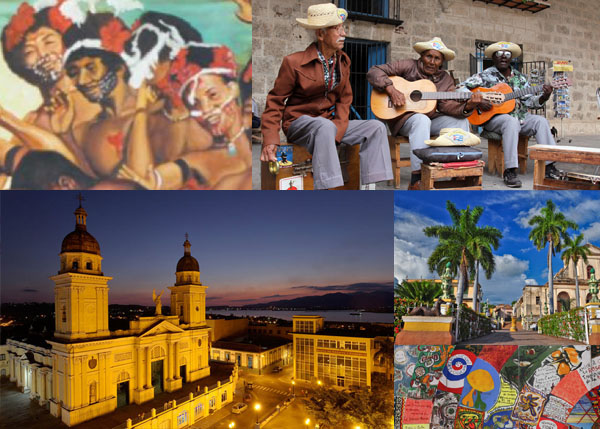12.2.1 The Timba.

Timba is a term that emerged within the Cuban musical scene in the 1990s. Its purpose is simply to name the most original and contemporary form of popular dance music produced by Cuban creators and performers. It is currently the subject of much controversy among specialized critics. It is the most important phenomenon in Cuban popular music of that period.
In previous decades, we find the first references and roots of the term “timba” in Cuba; it has been widely used to address specific issues. Musically, it can be found in certain components contributed by the legendary band Irakere, as well as in Rumba, due to the frequent and common use of the phrase “la timba está buena” (Timba is good). This expression was used by spectators or the musicians themselves to express their approval of what was being heard.
Today, the term is used to refer to popular dance music created in Cuba in the 1990s; that is, it refers to a Cuban musical genre that emerged during that period.
Among the characteristics of the musical treatment that gave rise to Timba over the years are new ways of manipulating sound planes and rhythmic contrasts, angry tension, and the use of aggressive sounds.
This term has been the driving force behind numerous investigations, and among the opinions of various specialists, Dr. Danilo Orozco stands out. He understands the term Timba as a characterization of an intergenre. This arguably represents the clearest and most current conceptual perspective on the issue. He conceives it as a fusion resulting from various musical genres that possess a specific composition.
With Irakere, by maestro Chucho Valdés, one of its fundamental precursors, the pioneering orchestra of this new form of popular dance music is NG, the band of the brilliant musician José Luís Cortés, “El Tosco,” considered the creator of this rhythm. Their creations embody the fusion of genres such as Cuban Son and Salsa, as well as Caribbean rhythms and other ingredients, resulting in Cuban Timba, which in its beginnings was determined by an interstylistic congregation.
Timba is a four-beat rhythm, like salsa, but unlike salsa, it lacks syncopation. Timba features the extreme fragmentation of classic tumbao, the counter-accentuation and the fusion of fragmentary elements and planes, along with tense and harsh sounds. It is characterized by a very aggressive sound delivered by the wind and percussion sections.
The instrumental format for the performance of Timba must include a wind instrument section consisting of trumpets, trombones, and saxophones. Percussion is almost entirely represented, with the presence of Cuban major and minor percussion. The piano, on which the famous tumbaos are performed, is played, as is the bass and vocalists. The singing is influenced by rap, which is why it becomes more declaimed, sometimes varying the solo-chorus structure.
The wind section stands out, as these instruments play distorted melodic phrases, usually in their higher registers. The other section that stands out is the percussion section, which offers great rhythmic and aggressive work.
One characteristic of Timba that sets it apart from other musical genres is the way the lyrics are treated. These lyrics are social chronicles, addressing the everyday and social events. Among the most frequently used themes are relationships between couples and women. Similarly, in the songs of the 1990s, there is an emphasis on criticizing women for certain behaviors such as materialistic pursuits and prostitution.
Numerous Cuban popular dance music groups perform Timba with great flavor, among them it is worth mentioning, apart from NG la Banda (which is considered the initiator), Los Van Van of the maestro Juan Formell, La Charanga Habanera which is directed by David Calzado and Bamboleo of Lázaro Valdés, among many others.
Cuban Timba is considered the first unprecedented movement in Cuban popular dance music, capable of capturing the international sympathy it has garnered since the 1950s. Since its conception, it has been present on all Cuban and international stages, earning the public’s favor.








